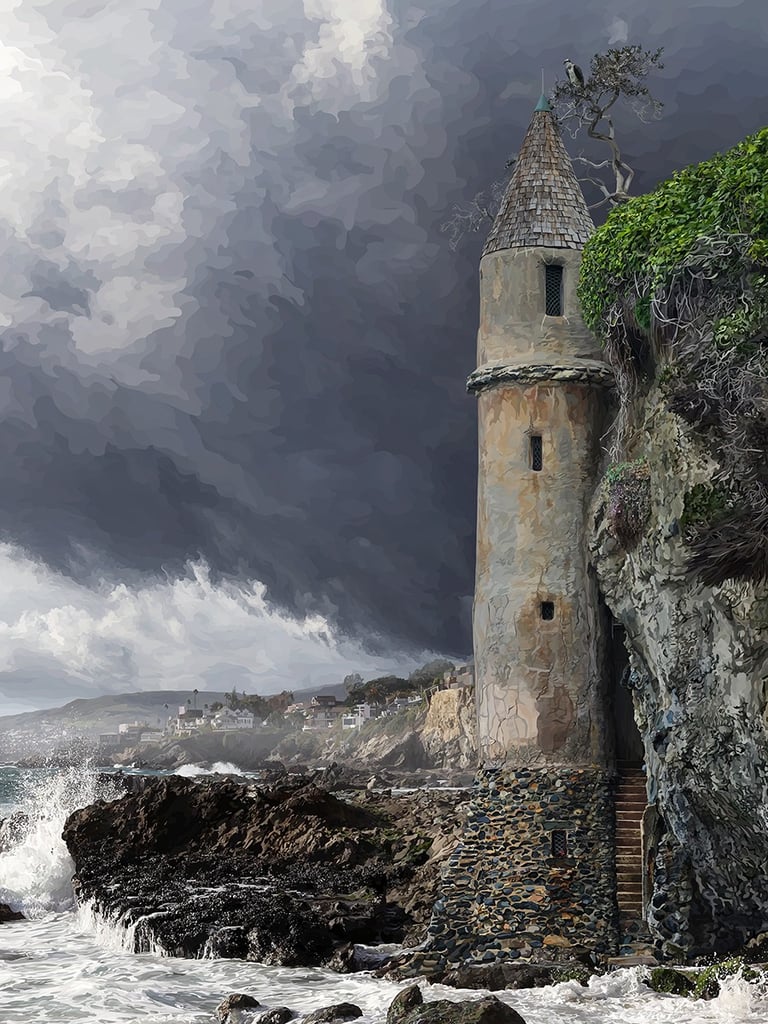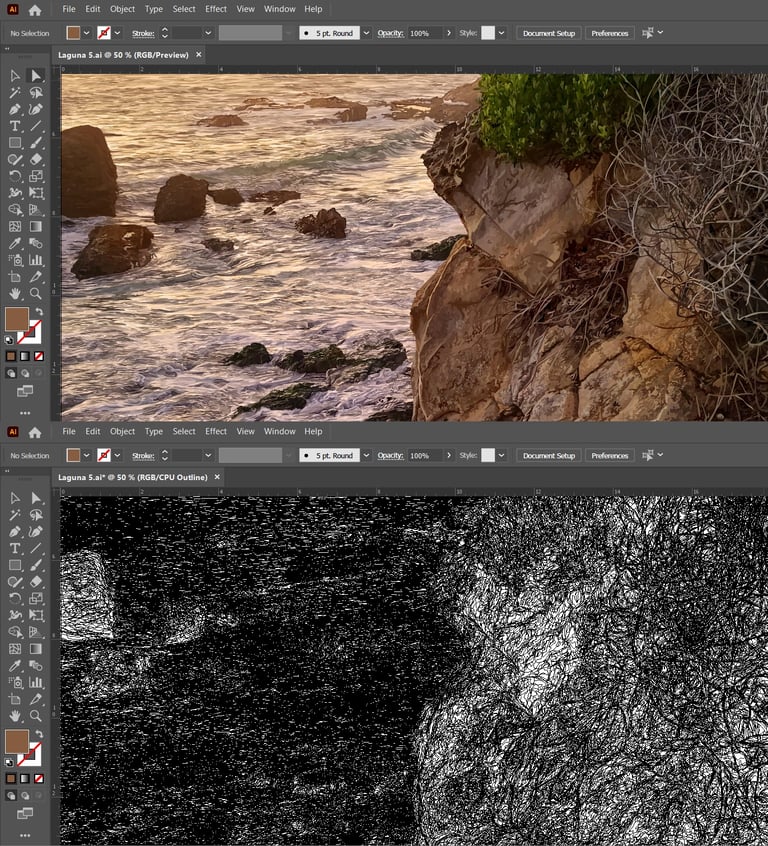What is Vector Hyperrealism?
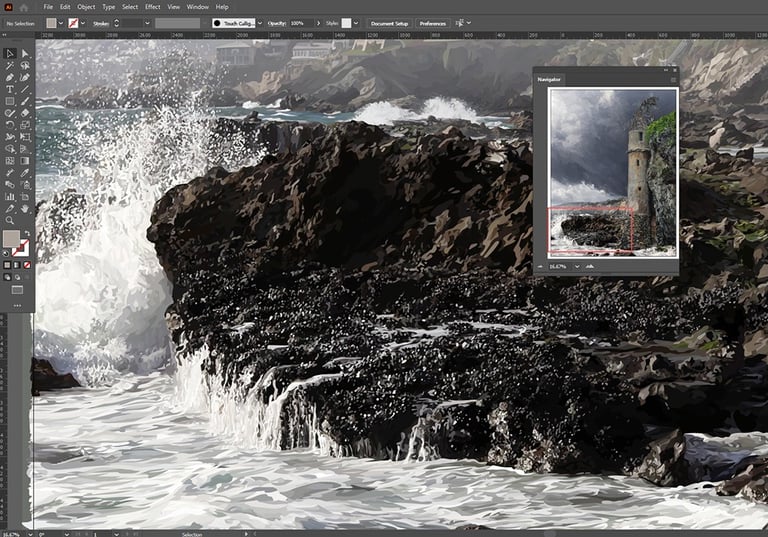

"Pirate Tower" (2024) — commission of Laguna Beach, California
With years of experience across multiple mediums behind me, I set out to explore how vector graphics could be used not to simplify but to create realism and depth.
I called it hyper-detailed vector art.
Soon, through curiosity and self-reflection, the work evolved – naturally and unexpectedly – into something that began to push beyond the realism end of the axis and into the uncharted territory of visual representation.
Defining Vector Hyperrealism has become both a technical and philosophical pursuit: a merging of digital tools with the limits of human patience. It’s not just a style experiment: it’s an exploration of how a rigid, mechanical medium, long associated with simplification, can instead be used to reveal – not reduce – the emotional perception of the complexity of reality.
Just as photorealism once redefined painting in the age of photography, Vector Hyperrealism redefines the possibilities of vector as an art medium. My goal isn’t simply to impress with detail, but to elevate the medium — to reclaim vector from its utilitarian past and reframe it as a tool for fine art.


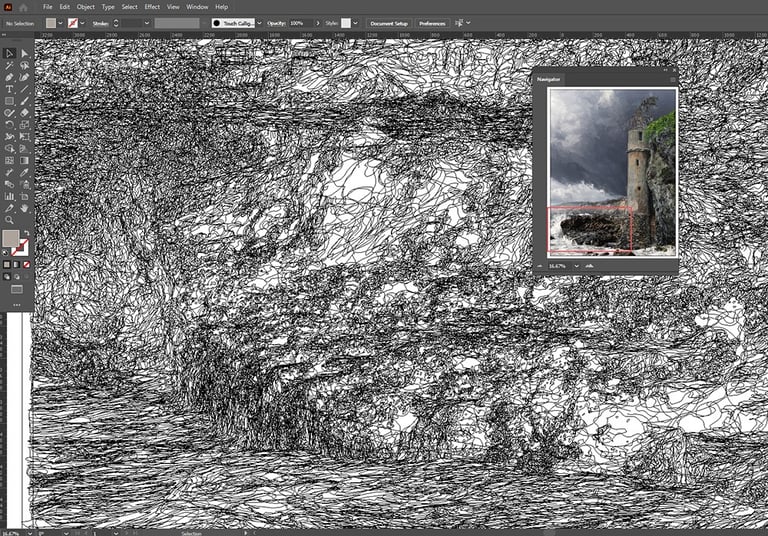

"Pirate Tower" :: close-up and details
Each piece is drawn entirely by hand in Adobe Illustrator. No autotracing. No shortcuts. Every element, every shadow and every highlight is crafted purposefully, shape by shape. Some works take weeks. Others -- months. The most ambitious to date, The Golden State (2024), contains 77,832 individual hand-drawn vector elements.
From afar, these images might appear photographic. But zoom in, and a different story emerges: each element is a meaningless abstraction on its own. It is to the whole what an ant is to a colony. I’m fascinated by that emergence.
I want these works to feel monumental like building a cathedral to human craftsmanship in an age of automation, disposable imagery, and algorithmic shortcuts.
This is my rebellion. Not against AI itself, but against the fear that AI marks the death of the artist. Vector Hyperrealism is my commitment to human intention and, considering that nearly half of my works in this direction have been private commissions, I’m happy to say that appreciation for craftsmanship is still very much alive. And I believe it’s only going to grow, especially in the face of the approaching generative-content singularity.
"Stairway to Heaven" (2024) — commission of Woods Cove in Laguna Beach, California
Vector Hyperrealism is a new frontier in contemporary art, and the art practice I’ve been quietly and obsessively developing for the past few years.
Although vector is seamlessly woven into our digital lives – including the font used to display these words – it’s not a concept widely known to the general public outside the design world.
Created using points, paths, and curves defined by mathematical equations rather than pixels, vector graphics are infinitely scalable and prized for their crisp, clean aesthetics. Thus, historically, they’ve been synonymous with minimalism: used in branding, UI, graphic design, and flat illustration. Vector has never been associated with realism, let alone hyperrealism.
Until now.


What is the difference Between
VECTOR vs RASTER
My journey toward this frontier began with intention.
Back in 2013–14, I began experimenting with visual complexity in raster, creating my first ultra-detailed architectural illustrations. Those works tested the limits of both my patience and my hardware. I loved the art, but not the process: having to wait 20 minutes every time I hit save was unbearable.
Still, the desire to push mediums to their limits never left me.
At the end of 2022, I decided to revisit that longing, but this time, with a plan and a technical solution: vector.

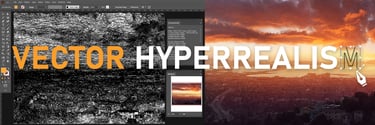
BE THE FIRST TO KNOW
Get early notifications and exclusive updates.

